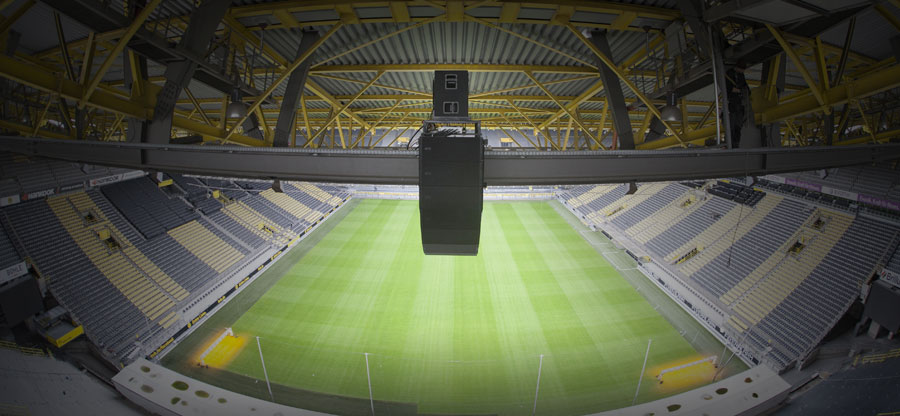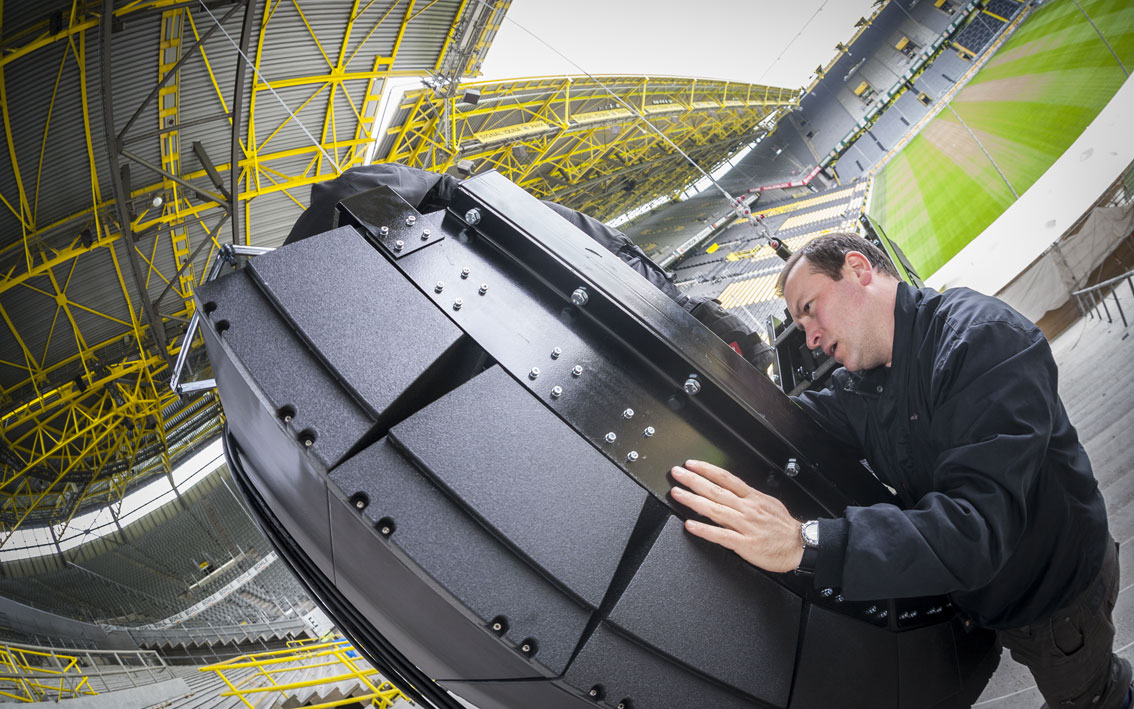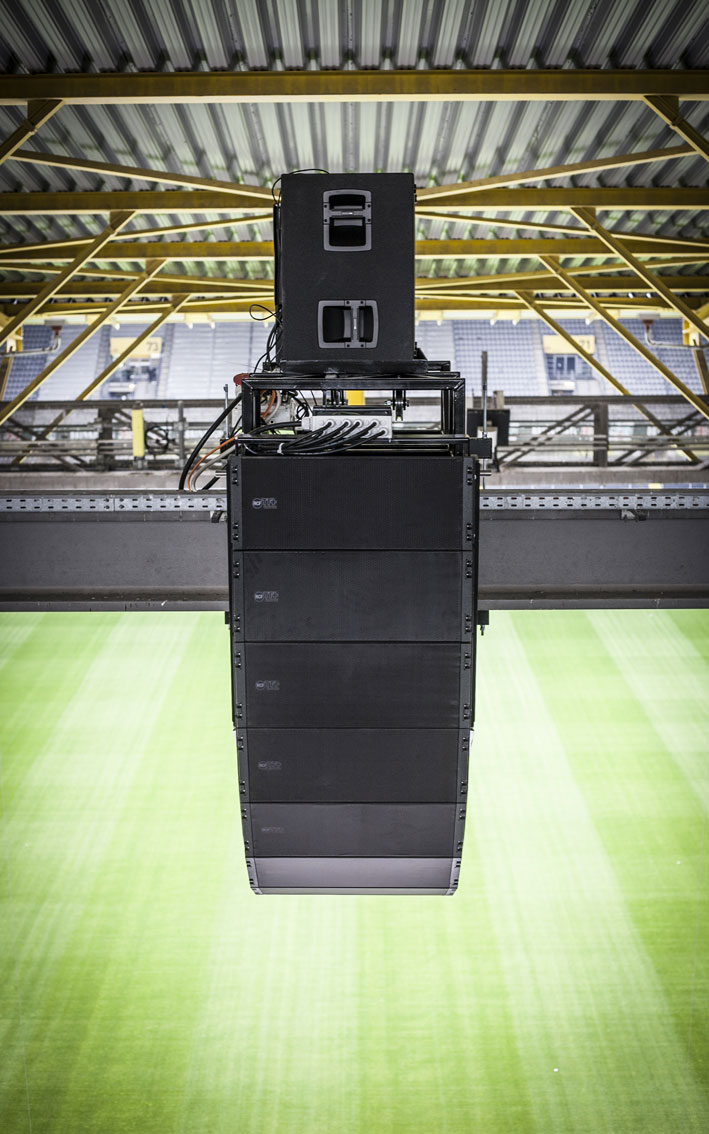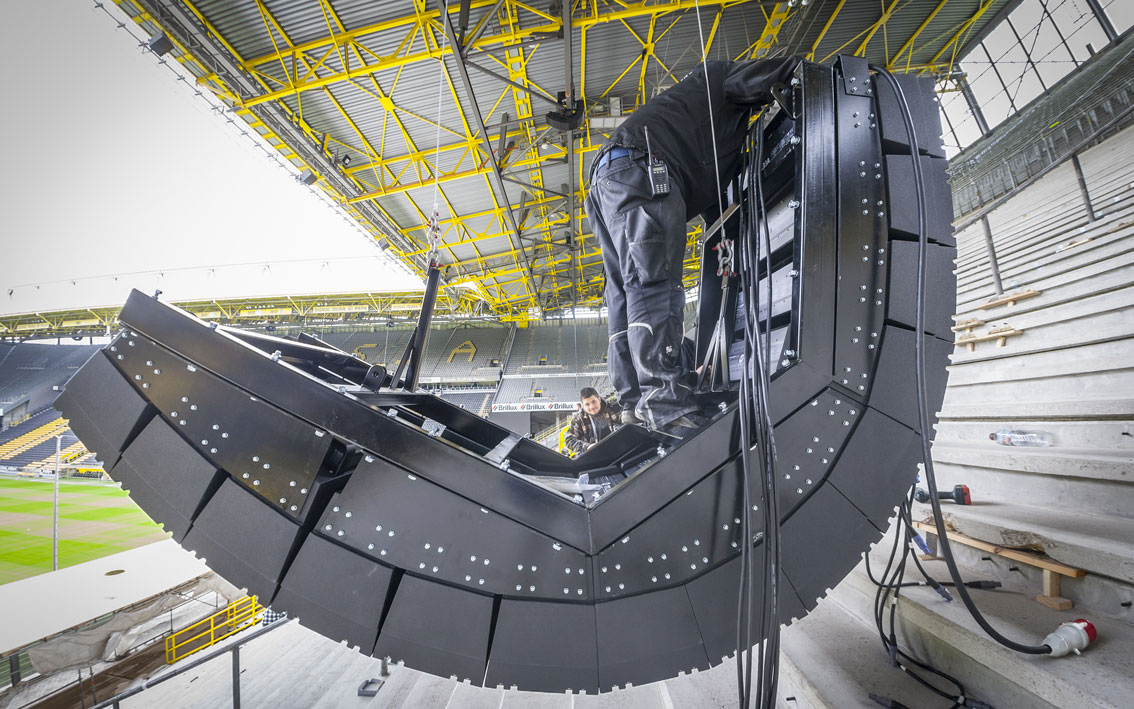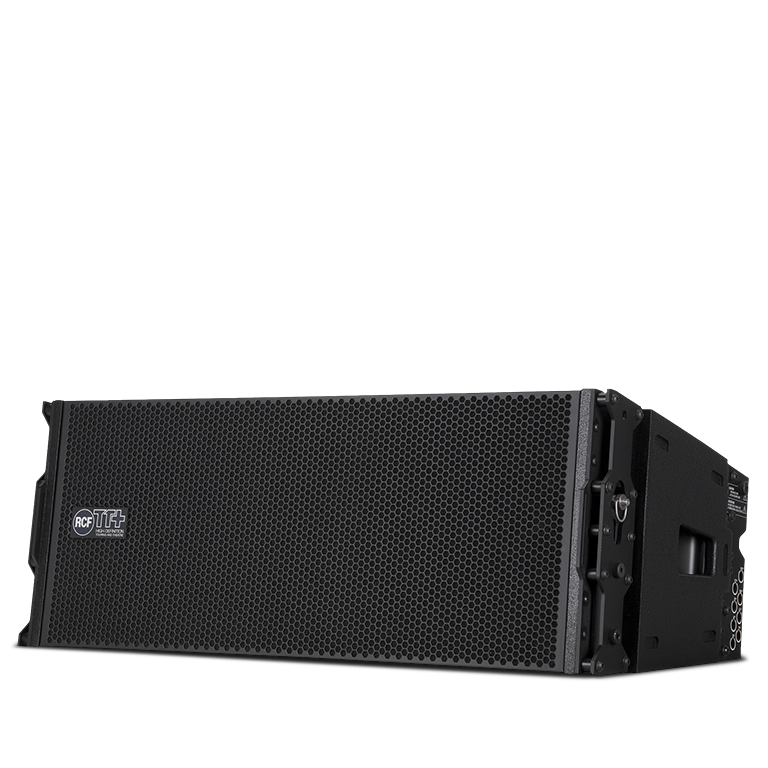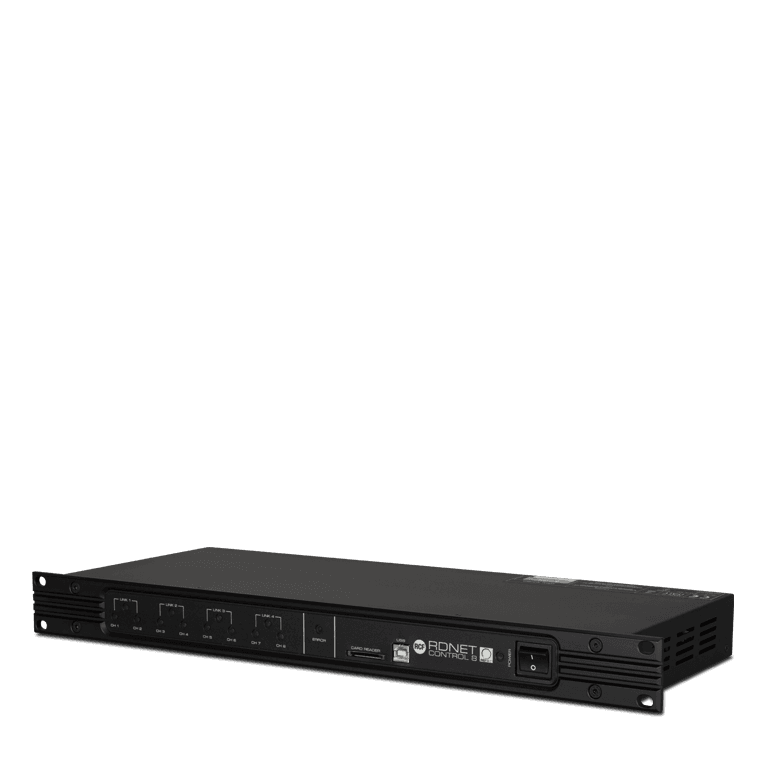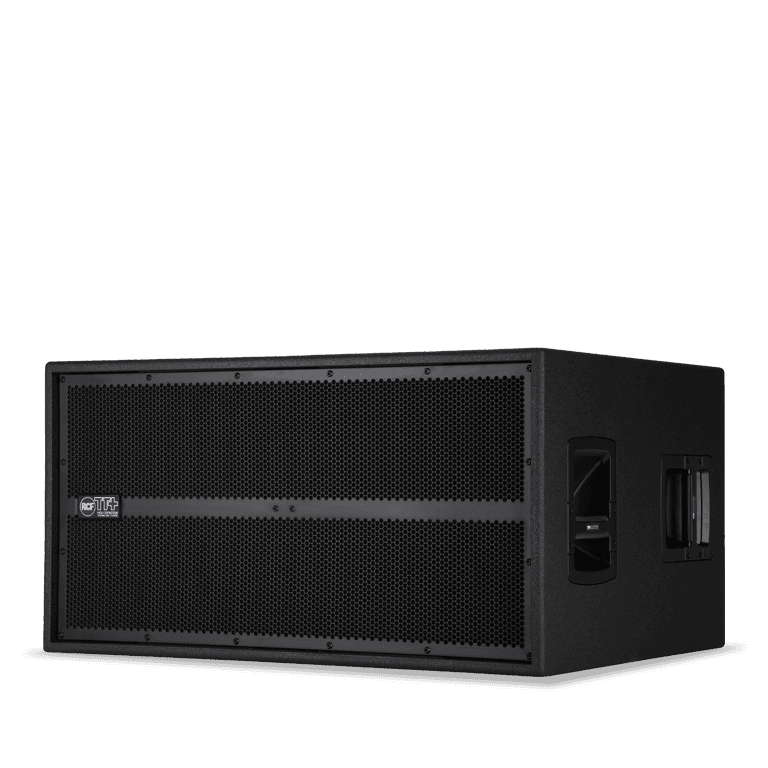Dortmund Stadium goes active with RCF
As the largest football stadium in the German Bundesliga, with a capacity of over 80,000, Signal Iduna Park — home of Borussia Dortmund (BVB) — recently sanctioned a radical upgrade to its public address system. Their aim was to achieve higher intelligibility, even pattern control (with extended low frequency capability) and unobscured sightlines — but most importantly to link the voice evacuation and stand systems into a unified network, that could be monitored, error- and health-checked remotely. The solution was provided by RCF.
The deployment of 14 RCF clusters of 14 TTL33-A MKII line array elements (with a TTS26-A sub at the base of each), will futureproof the famous stadium for decades to come. But the most remarkable aspect is that this is an entirely active solution, wrapped around the beams to keep the sightlines intact. Loaded with RCF’s proprietary RDNet DSP and additional electronics for monitoring it is this inherent software that has been programmed to integrate the new PA/VA evacuation system — thereby fulfilling the EN 60849 standard for performance requirements.
The planning and design of the system was a joint venture between RCF’s 10-strong Engineering Support Group, led by Product Market Manager (Install Sound), Antonio Ferrari, and RCF Group German Subsidiary, led by Georg Hofmann and Norbert Wessel, working in conjunction with integrators fulfil engineering GmbH, headed by Norbert Labudda. It is fulfil engineering’s planning department that initiated, coordinated and supervised the project. The EASE 4.3 predictions provided the design architecture to develop a fully optimised system, setting the splay angles and placements of the hangs — which are spaced equidistant, some 20 metres apart. Four clusters each are mounted down the East and West tribunes (firing into the upper and lower tribunes) and three each cover the South and North stand.
All 196 active line array elements have been especially weatherised and the cone drivers coated, as is the wooden enclosure, which is is painted with polyurea both inside and out. All metallic items are fabricated in stainless steel. The decision to completely overhaul the system had been taken after complaints about intelligibility and coverage — particularly the insufficiency of the low frequency response.
Responding to an original tender for a standard passive system by consultant, Michael Creydt, RCF’s progressive active proposal ensured their bid was successful against most other major manufacturing brands who responded to the tender. Fulfil engineering had already collaborated with Mr. Creydt on previous projects. And when Norbert Labudda then met up with Norbert Wessel at the ISE 2012 expo in Amsterdam, the possibility of providing an active line array solution was discussed — some six months before the tender document was published.
Aside from the benefits of an advanced integrated DSP, the RCF Engineering Support Group also promoted the advantages of a single active line array source over individual speaker distribution, arguing that this would deliver coverage consistency and eliminate phase cancellation caused by the sound arriving in different zones at different times.
Wessel recalls, “Once we had floated the idea of an active approach we needed to select the ideal system. We knew the TTL33-A was a workhorse in live audio and had 100% confidence in the TTL33-A system. We know it has an amazing touring pedigree — with six drivers, 3-way amping and powerful DSP built in. Although the idea of having an extended low frequency performance was derived from the live concert business, it was the best possible solution.”
The wizardry was clearly in the RDNet Control 8 network, which had not been present in earlier versions of RCF’s premium TT+ series. And it was the real-time monitor and control attributes — allowing it to manage a maximum of 256 devices per hub and 32 per bus in in a ring topology — that convinced Mr. Creydt (although in Dortmund fewer are used — one per grandstand plus another four as a hardware backup). Since everyone was aware that system checks in the past had taken a long time to implement and rectify, errors could now be flagged and addressed immediately. “We knew this would save both time and money — and that we had the technology to do the impedance control,” Wessel continued. Fulfil had stressed the necessity of meeting all regulations for the evac as a result of which RCF made modifications to the cabinet and mounting facility, enabling coverage to be provided from a single array.
The RT60 reverberation time had been simulated and measured obtaining values ranging from 4 to 5 sec in the 1k/2kHz range. Average SPL levels (Leq) of 111dBA have also been achieved with aberration of ±4dB in the100Hz-10kHz range, as well as a STI of 0,5 in most of the areas, obtained by the measurement of the impulse response and with modulation transfer function for levels of approximately 85dB(A). And with a horizontal coverage of 100°, the SPL comfortably outperforms the existing system, which still operates in the four corners of the stand (and has been redeployed onto the pitch itself). This is a key factor, since the acoustics, particularly under the famous ‘Südtribune’ roof, are notoriously loud.
But it is the frequency range which sets this solution apart. Each TTL33-A enclosure houses two 8” woofers for the low section, a horn-loaded 8” cone driver for the midrange and three 1” compression drivers for the tops controlled by the DSP-steered output stage and powered by 1250W RMS 3-way amping.. At the top of each hang is a TTS26-A sub which provides further control. RCFs original solution had not called for a subwoofer — but RCF knew that in addition to extending the frequency range, the subwoofer would also function as an end-fired cardioid and provides control of the LF down to 60 Hz, thereby helping to reduce reflections.
The decision to specify the 2 x 15” subs, powered by 3400 watts of digital amplification, was something of a masterstroke, with a frequency response of 35 Hz - 120 Hz, and RDNet boosting the pattern control. Says Norbert Wessel, “The TTS26-A is able to be operated up to 160Hz so we were able to overlap the frequency range of the TTS26-A and the TTL33-A from 60Hz-160Hz. Therefore we used the TTS26-A firstly to extend the overall frequency range down to 40Hz, and secondly to create directional behaviour in conjunction with the TTL33-A, in the range from 60Hz up to a little over 120Hz.” The network technology between the stands’ alarm systems is fully redundant with its fibre optic ring feature. RDNet, has been specially programmed to ensure the entire signal path is monitored — the result of a permanent pilot tone generated from the PAVA system hub which is supervised by the input modules of the TTL33-As and allows cross communication. In fact two pilot tones are used: one at 19 kHz for cable testing and one at 10 Hz for transducers monitoring.
One special feature of RCF’s new amplifier modules is the full monitoring option on all chassis that are integrated in the speaker, with reporting carried out via bus systems. The entire transmission system is on a redundant optical multi-mode fibre ring with open standard architecture, communicating via TCP/IP, USB and RS-485.
With only one power supply, two signal lines (A/B) and two control buses (A/B) loudspeaker redundancy has also been taken care of. With monitoring of the pro sound loudspeaker fully integrated into the voice alarm system, and all components — from mics to the signal transmission — remotely addressable, loudspeaker failures or outages in the amplifier components are immediately located, reported, recorded in the voice alarm system, and transmitted to the central building control system.
“We have managed to integrate the complete monitor facility into TTL33-A so we can detect and measure the impedance of the speaker at the input stage and feed back to a network link using GPIO and so on,” he says. “We carry out LF and HF checks, as well as transducers and cable connections; if there is a fault we see it in RDNet and have direct contact with the PA/VA system.” In addition, the RDNet allows the venue to supervise the output stage status with a preset single structure, that takes into account temperature, delay etc.
To create an unusual array design with a vertical angle of approx. 140°, firing into the back of the upper and lower tribunes (and outwards to the edge of the pitch, including security and ‘technical’ coaching areas), some bespoke engineering was required. Georg Hofmann admits that weight had been a key factor in their considerations. “We started to think about a solution that would be easy to install and maintain. We needed a sub-bracket mounted on the beam with a motor hoist. We could have used standard fixing but instead we sought a dedicated solution.”
Enter Expo Engineering from Oelde — experts in this field, who were commissioned to develop a special cluster frame. As opposed to the original flyware, which which would have connected the original cabinets at the back and front, only the rear hinge sections of the cabinet have been used. Therefore Expo Engineering designed two backbones, connected via internal bracing, with mounting plates on both sides. Within these mounting plates each cabinet is fixed with eight screws. To facilitate servicing the hangs can be lowered by 25 metres on chain hoists.
This caterpillar-like design, installed around the steel beams, now brings all the advantages of both point source technology (with the end speakers) and linear distribution (around the curvature in the centre) — so it is effective over the entire frequency range. There is no external dynamics and only one EQ curve loaded into the DSP.
Norbert Wessel explains that although it is function of the TTL33-A acoustic design to be able to EQ and level the pattern control via DSP, in Dortmund the optimisation is only carried out by the mechanical curving of the array. “As a result, we maintain maximum audio output and constant behaviour over the whole array up to highest levels.”
Both Norbert Wessel and Georg Hofmann are impressed by the results. “The use of active speakers has certainly enhanced the frequency range. I was impressed how constant the audio is ±2dB in the special voice range between 400Hz-4-5K. You barely hear the crossover at all.” fulfil themselves had wanted more control in the frequency range, rather than sheer PA levels, according to project engineer, Lars Bendfeldt. With bases in Gelsenkirchen and Dortmund, his company has been responsible for installation, such as intercom and power supplies, since the last system was installed 13 years ago.
It was in 2000, that Germany won the FIFA World Cup bid, as a result of which the stands were further extended. In a stadium originally built in 1974 (to hold 54,000 people) four new stands were built to fill the corners between the existing grandstands bringing the capacity up to its present 80,720 (standing and seated.
Great attention was given to sightlines and eight 62 meter high, yellow steel pylons, now support the stadium roof from outside the ground meaning that everyone has a clear view. The improvement in the sound system is palpable as the listening tests revealed. Georg Hoffman and Norbert Wessel believe the new solution is superior for one simple reason. “Because it is a single source we can control both the direct energy and reflected energy and we use the sub to control the main array and provide more pattern control at the low end.”
Wessel summarises, “With the old system the voice was high-passed at 400Hz but this did not deliver a natural sound and when musical content was played it was not satisfactory. With the RCF solution the bass drum provides high impact as demonstrated at the first live show broadcast through the system, and there are fewer reflections due to the way in which it was configured.”
It is unlikely that the TTL33-A will ever reinforce a rock concert at this stadium — a celebrity football match is the biggest event outside football that would class as entertainment. On match days it will be switched on typically an hour before kick off as background music beckons the crowds in. Inputs include the standard radio mics, MP3 and line devices, with a DJ and celebrity announcer Norbert Dickel — a former player back in the 1980’s — who also operates a live internet stream so that fans can chat to him online.
In fact Dickel was so anxious about the quality of the new sound system that he flew in from vacation and took a taxi direct from the airport to the ground just to hear it. Both he and the resident DJ were instantly impressed with the improved sound, confirms Wessel. fulfil engineering has been retained to maintain and healthcheck the technical infrastructure at the stadium which fans refer to as ‘The Temple’. The final word comes from Norbert Labudda himself. “This acoustic distribution system is the most advanced you will find in any German stadium and we expect it to set a benchmark for others to emulate. It is the first system that corresponds to all norms and facilitates universal control and monitoring — from a single component right up to the loudspeaker chassis.”
Related products
TTL 33-A II
ACTIVE THREE-WAY LINE ARRAY MODULE
- 1250 W switching amplifiers
- 6 high power neodymium transducers
- 96 kHz, 32 bit DSP processing
- RDNet on board
RDNET CONTROL 8
8 OUTPUT MASTER UNIT
- Ethernet (remote control) and USB (direct control) PC connection to RDNet
- Control up to 8 SUB-NETS of up to 32 Slave Devices
- All devices are cyclically scanned (“POLLING”) 10 times a second
- Auto detect device placement
TTS 26-A
ACTIVE HIGH POWER SUBWOOFER
- 3400 W digital amplifiers
- 2 x 15" high power neodymium woofers
- 96 kHz, 32 bit DSP processing
- RDNet on board
